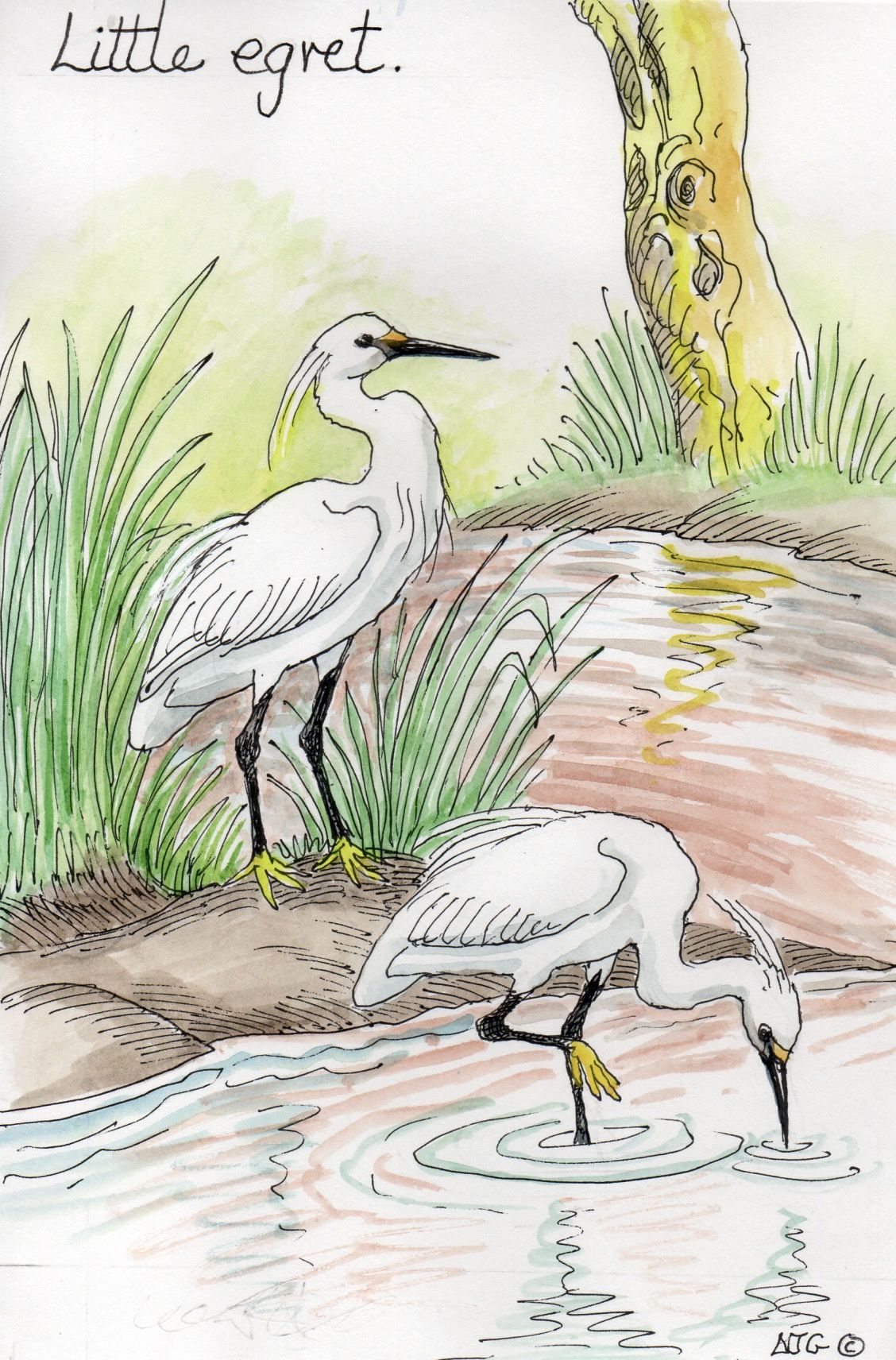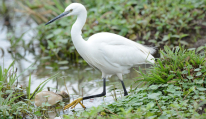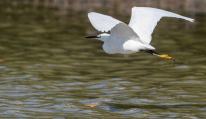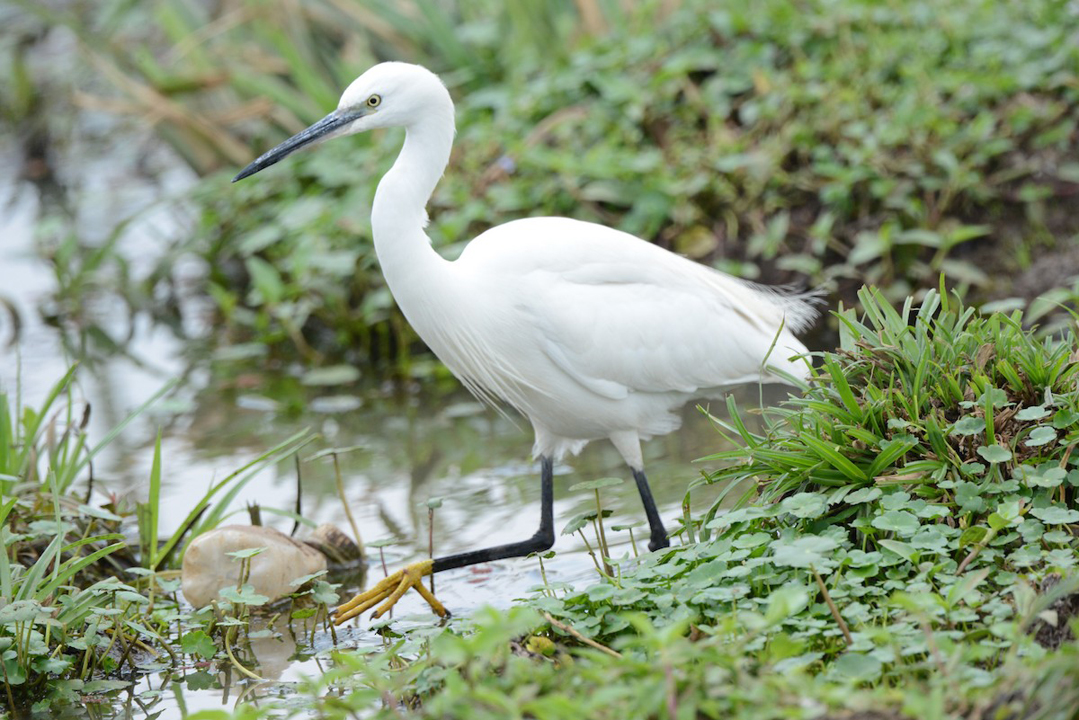Social Structure
This bird is often observed by itself or in small gatherings, and can become defensive when feeding. It also likes to roost in trees with other herons.
Communication
Noticeably vocal and at times sounding like a crow, little egrets have distinctive calls when taking off and landing, in flight, and in feeding.
Behavior
Little egrets wade through shallow waters or else stand motionless as they watch for potential prey; they will also fly in search of their next meal. They almost always hunt during the day when visibility is best. Opportunistic feeders, they will take advantage of any prey that is abundant.
Conservation
Least concern
Diet
While little egrets mainly eat fish, they will also consume snakes, amphibians, crustaceans, insects, and other invertebrates.
Breeding
Monogamous pairs often nest in large colonies with other little egrets, other herons, ibises, and cormorants, with nests sometimes only a few feet apart. Nests are built by males and are stick platforms in trees, shrubs, ledges, or reeds. Both parents tend to the eggs and chicks.
Friends & Foes
Chicks in nesting colonies are vulnerable to attacks from hawks, owls, and crows.
Population in Kenya
Little egret populations are robust around Lake Victoria.
Range & Habitat
Little egrets are widespread throughout the Old World, and have begun to expand their range into the Caribbean.
Little egrets are at home around many types of fresh, brackish, and saltwater habitats, including lakes, rivers, ponds, lagoons, marshes, and coastal areas. However, they also need trees or other protected spaces for nesting.





